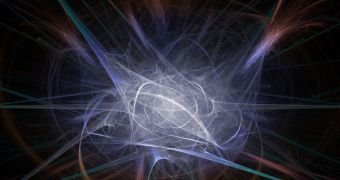The Big Bang theory says that the universe began at T=0 as it suffered a sudden expansion into space-time, from a singularity-like object of zero volume but of infinite mass and density. So what was before that? Certainly, things do not just appear out of nowhere. Some kind of structure must have preceded the current universe, such as another universe, maybe. Loop Quantum Gravity, for example, suggests that our universe is the result of a quantum bounce, determined by the gravitational collapse of a previous universe.
Nevertheless, this theory also suggests that the previous universe would not have been very different from the current one. "The significance of this concept is that it answers what happened to the universe before the Big Bang. It has remained a mystery, for models that could resolve the Big Bang singularity, whether it is a quantum foam or a classical space-time on the other side. For instance, if it were a quantum foam, we could not speak about a space-time, a notion of time, etc. Our study shows that the universe on the other side is very classical as ours," says Parampreet Singh of the Perimeter Institute for Theoretical Physics.
The problem is that, while a previous universe might have existed, any information about it would have been lost in the Big Bang singularity, thus there is no evidence that it ever existed, reckons physicist Martin Bojowald from Penn State University. If Big Crunch theories are correct, no evidence of the existence of the current universe would exist after the Big Bang bounce.
"This means that the twin universe will have the same laws of physics and, in particular, the same notion of time as in ours. The laws of physics will not change because the evolution is always unitary, which is the nicest way a quantum system can evolve. In our analogy, it will look identical to its twin when seen from afar; one could not distinguish them," says Singh.
Singh believes that the previous universe must have had the same properties as the one we experience today, and it would have evolved according to Einstein's equations for a large universe. Calculations reveal that our universe would have acquired its features as it reached a size 100 times larger than the Planck size, and should contain the same amount of matter and evolve similarly to the pre-Big Bang universe.
Nevertheless, although another universe, similar to the current one, might have existed before the Big Bang, it does not necessarily mean that it would have been a parallel universe, where life or a person identical to you existed.
"If one were able to look at certain microscopic properties with a very strong microscope - a very high-energy experiment probing the Planck scale - one might see differences in some quantities, just as one might see that twins have different fingerprints or one has a mole and the other does not, or a different DNA," Singh said.
"The biggest question is whether these features survive when we consider more complex situations", Singh says. Large structures, such as galaxies or galaxy clusters, should leave some fingerprints of their existence in the next universe, like whether galaxies formed in a different way or if the universe would have had a different matter distribution to one side or the other.
Currently, it is unknown what would be the ultimate fate of our universe, whether it would end in a Big Rip or a Big Crunch, since still there are uncertainties related to how fast the universe is accelerating as it expands in space-time; however, there is a good possibility that it will suffer a re-collapse to give birth to a new one. "Such a universe will have many bounces from one branch to another. It is also possible that universes in different branches will be identical," Singh explains.

 14 DAY TRIAL //
14 DAY TRIAL //